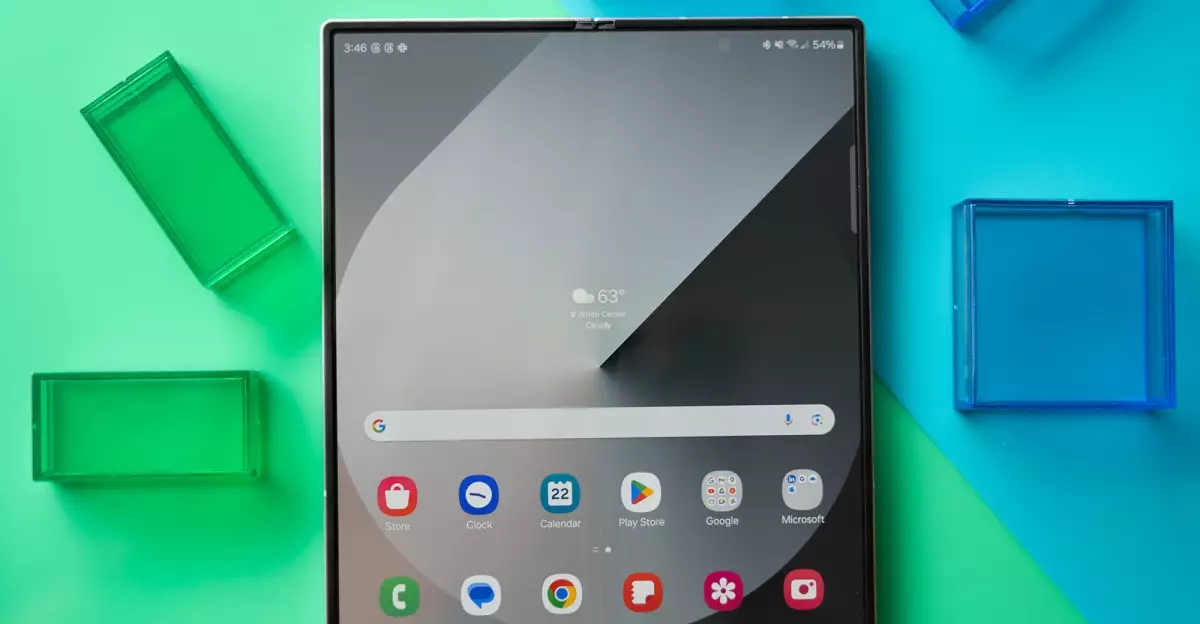Samsung stands at a critical crossroads in the evolution of mobile technology. Despite being a pioneering force in the foldable phone industry, the company’s recent efforts seem insufficient to spark mass adoption. Their upcoming lineup, featuring an Ultra foldable device and refinements to existing models, suggests a strategic push to address previous shortcomings. Yet, the question remains: can incremental upgrades and fashionable marketing truly convert curiosity into consistent consumer commitment?
What Samsung appears to be doing is more than mere iteration; it’s an attempt to recalibrate the entire foldable narrative. The inclusion of a new Ultra-series indicates an ambition to position foldables as premium, flagship devices aligned with the brand’s top-tier image. However, if history has shown anything, it’s that consumers are wary of investing in gadgets that, despite their novelty, suffer from durability and cost issues. The challenge is not just delivering innovative features but also convincing consumers that the technology is mature enough to justify the premium price tags.
The company’s response to long-standing criticisms—such as the fragility of foldable screens and the high repair costs—will be pivotal. Samsung’s efforts to incorporate thinner profiles and larger displays for the Z Flip 7 demonstrate an understanding of consumer preferences for sleekness and usability. Nevertheless, the core issues of durability and resilience remain unresolved, which could hinder adoption even amidst the excitement of new hardware.
Market Realities and Consumer Hesitation
Despite years of marketing and product iterations, foldable smartphones continue to remain a niche market. According to industry reports, foldables captured a mere 1.5 percent of the global smartphone market last year. While Samsung maintains a dominant position in this space, its sales figures tell a silent story: curiosity does not necessarily translate into consumer loyalty or mass adoption.
One cannot ignore the entrenched resistance rooted in practical concerns. Foldable devices, with their delicate hinges and flexible screens, are inherently more vulnerable to dust, debris, and accidental damage. Even with technological strides, the allure of foldables is often overshadowed by the pragmatic worries of durability and repair costs. The absence of a true IP68 dustproof rating for foldable models remains a glaring gap that could deter mainstream users seeking reliability over novelty.
Moreover, the high price point acts as a formidable barrier. Consumers are increasingly stretched by inflation and rising costs across various sectors. As a result, investing hundreds of dollars in a foldable device riddled with perceived vulnerabilities becomes an unappealing proposition. Samsung’s attempt to diversify its foldable offerings—including a potentially cheaper FE version—aims to broaden appeal but may still fall short of addressing the core affordability barrier.
The Potential of Strategic Market Expansion
While Samsung grapples with the limitations of current foldable technology, industry insiders are optimistic about future opportunities. The rumored introduction of an Apple foldable in 2026 could well be a game-changer. Apple’s entry into the foldable arena would not only legitimize the category further but could also dramatically increase consumer confidence and market size.
The entry of Apple—and possibly other competitors—would force Samsung to innovate beyond feature enhancements. It could spearhead a new wave of durability, efficiency, and functional integration. Such competition might push Samsung to accelerate efforts in making foldables more resilient and affordable, ultimately widening the market segment and enticing a broader demographic.
In addition, Samsung’s strategy of releasing multiple models across price points and features could prove effective. By offering both high-end Ultra devices and more accessible options, they could carve out distinct niches and gradually sway skeptics. The key lies in demonstrating that foldables are not just novelties but viable everyday devices that can rival traditional smartphones in durability and value.
Beyond Innovation: Shaping Consumer Perception
Ultimately, success in the foldable smartphone market hinges on changing consumer perceptions. Samsung’s latest efforts hint at a recognition that hardware alone will not be sufficient. Seamless user experiences, robust durability, and convincing stories of longevity are essential to shift mindsets.
The future of foldables depends on how well Samsung and other brands can address pain points while elevating perceived value. Their innovation should transcend specs and focus on making foldables more intuitive, resilient, and integrated into daily life. As the industry matures, consumer demands will not just be about the impressive fold but also about peace of mind—knowing that their device can withstand life’s uncertainties.
In the end, Samsung’s willingness to push boundaries and embrace bold design changes is promising. Yet, whether these innovations will be enough to propel foldables into mainstream consciousness remains uncertain. Only time will reveal if their gamble on ultra-premium models and strategic market diversification can truly redefine the future of mobile technology.

